-
Car Reviews
- All reviews
- Midsize SUVs
- Small cars
- Utes
- Small SUVs
- Large SUVs
- Large cars
- Sports SUVs
- Sports cars
- Vans
Latest reviews
- Car News
-
Car Comparisons
Latest comparisons
- Chasing Deals
A plug-in hybrid is a niche solution, but for city-dwellers who want to cut local emissions without losing the ability to head bush the X3 xDrive30e is a compelling choice
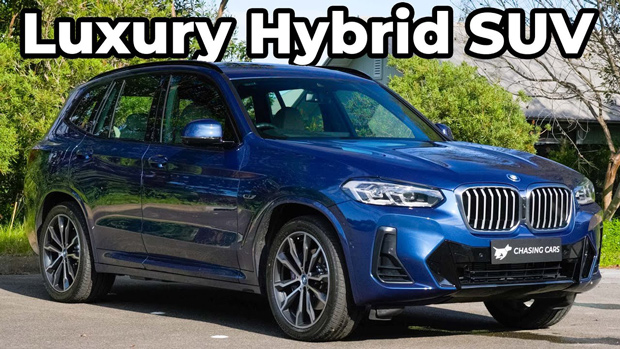
Petrol-electric hybrid midsize SUVs have proven to be very popular with buyers, at least for brands that nail the brief – think the Toyota RAV4 hybrid and Lexus NX hybrid.
Over in Europe, BMW has been busily developing its own hybrid recipe, mainly in an attempt to meet the EU’s tightening emissions standards for new cars. While BMW is maintaining petrol and diesel engine development, it is releasing electric and hybrid cars at a rapid rate.
BMW’s best-seller, the X3, has been lavished with attention to the point where it is available with seven powertrains – including the xDrive30e plug-in hybrid tested here, and fully-electric iX3 reviewed recently by Nathan Ponchard.
That said, higher efficiency and some electric driving range comes at a price. At $104,900 before on-road costs, the X3 plug-in hybrid is $30,000 dearer than the entry-level four-cylinder X3 20i ($74,900), while the Lexus NX450h plug-in hybrid ($89,900) is a lot cheaper than the BMW.
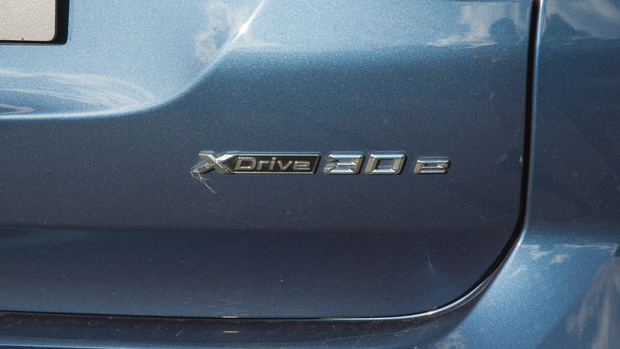
Then there’s the all-electric iX3 ($114,900), which eliminates the combustion engine for a big battery that provides 460km of electric driving range. It’s a different story in the X3 xDrive30e hybrid, which pairs a 2.0-litre turbo petrol four-cylinder with a smallish 10.8kWh battery to provide 51km electric range (45km as tested).
From the outside, it’s quite difficult to tell the hybrid apart from a combustion-engined X3 with only the ‘powered by i’ chrome trim down the side, blue-ringed BMW badges, charging flap and model designation serving to distinguish its battery carrying status.
This is also the first time we’ve spent an extended period in a facelifted BMW X3 with its crisp new LED headlights (though this up-spec X3 gets laser headlights) and revised bumpers – it’s a handsome thing this ‘G01’ X3, certainly an improvement on the outgoing ‘F25’ model.
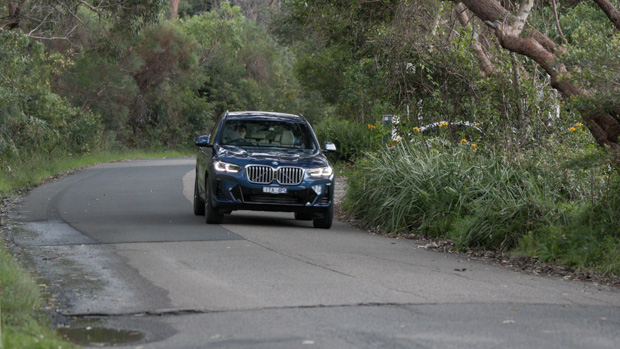
It also joins a growing selection of plug-in hybrid SUVs in Australia and can be considered a direct rival for the Lexus NX450h+ ($89,900) and Volvo XC60 Recharge ($97,990), Mercedes-Benz GLC 300e ($95,070) but also a less-polluting alternative to the X3 30d ($95,900) and Audi Q5 50TDI ($90,400).
The 30e’s hybrid system is built around the ‘B48’ 2.0-litre turbo petrol four-cylinder with 135kW of power and 300Nm of torque – found in the base X3 20i petrol – paired with an electric motor mounted on the rear of the ZF eight-speed automatic transmission.
Full performance from the system is only available if the battery isn’t exhausted. With some juice in the tank and the throttle pinned, the X3 hybrid will make claimed peak outputs of 215kW of power and 420Nm of torque, laying down a 0-100km/h sprint of just 6.1 seconds – quite impressive for a 1990kg SUV. Traction is not a problem thanks to a standard Torsen-type AWD system.
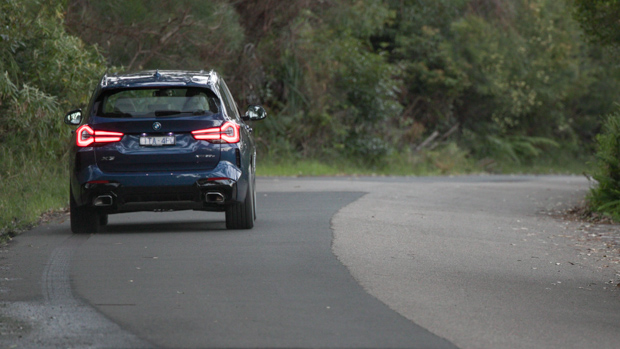
If you can’t plug in and charge the battery regularly, the 30e hybrid is probably not the X3 for you. Not only is performance limited with a flat hybrid battery, but you’d also be lugging around 190kg of dead weight for nothing. Those without an easily accessible power point at their home or office will be better off with a petrol or diesel X3, or the long-range electric iX3.
That being said, when you do run out of charge from your wall plug, the X3 functions like a series-parallel hybrid using regenerative braking (from coasting and a blended brake pedal) to give the 30e’s 10.8kWh lithium-ion battery pack extra little bursts of energy though under extended full-throttle runs with a depleted battery the 30e runs low on punch.
Owners who can commit to charging regularly – and driving the X3 in electric-only mode where possible – will benefit from a quiet, refined runabout that gives 45km of real electric range. That’s more than enough for most commutes. When running in electric mode, the motor provides 89kW/265Nm, which – while not quick – is sufficiently punchy.
There are several drive modes that differ from combustion-engined X3s, instead of comfort the default setting is ‘Hybrid’ with the option of ‘Eco Pro’ that tones down the throttle response and air conditioning. At the other end of the spectrum the X3 has Sport and Sport boost modes which blend all the grunt of the petrol and electric powertrains together for a surprising turn of speed.
The X3’s drive modes also influence the settings of the two-stage adaptive dampers with softer comfort setting providing a good fit for most of Sydney’s roads, though occasionally the combination of 20-inch alloy wheels and run-flat Pirelli rubber transmit square-edged hits through the X3’s sturdy cabin.
Put this midsize SUV into Sport mode on a country road though, and the X3’s composure, control and outright pace are impressive. You can feel the 30e’s extra weight when approaching the limit of adhesion but like all vehicles based on BMW’s cluster architecture the X3 feels like it shrinks around the driver.
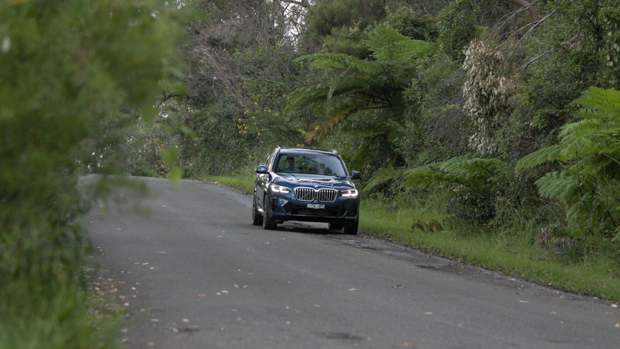
The 30e’s steering is a little vague and hard to trust so you rely more on the chassis feedback, but truthfully the American-built X3 is a midsize SUV designed to be comfortable and refined everyday with decent athletic capability, not to distil 911 DNA into a crossover and create the best-in-class backroad poise of the Porsche Macan.
In its 2017 ANCAP test the BMW X3 scored five stars and features front AEB with pedestrian and cyclist detection, blind-spot monitoring, rear cross-traffic alert, front and rear parking sensors, lane-keep assist and an excellent 360-degree monitor.
The xDrive 30e we tested was only equipped with regular cruise control with brake function and was missing BMW’s driving assistant professional program that nets adaptive cruise along with a more advanced lane-trace assist.
A lot of any premium vehicle’s appeal comes from the extended customisation available and our test X3 is specified very tastefully indeed with phytonic blue paintwork over no-cost oyster grey leather inside with a classy touch of open pore ash trunkwood trim ($269) and $2000 panoramic sunroof to bring even more light into the X3’s spacious cabin.
Sure, some of these options add up in price – bringing our car’s as-tested price to $108,269 – but we reckon it’s so worth tailoring a car like this to your tastes where possible.
While the X3 is made in America, the interior is backed up by typical German quality of construction with a solid feeling to all the plastics and no rattles or creaks evident over the test period. The wood trim adds welcome tactility and although the ‘Vernasca’ grade leather isn’t as smooth as BMW’s premium merino hide, it’s still soft.
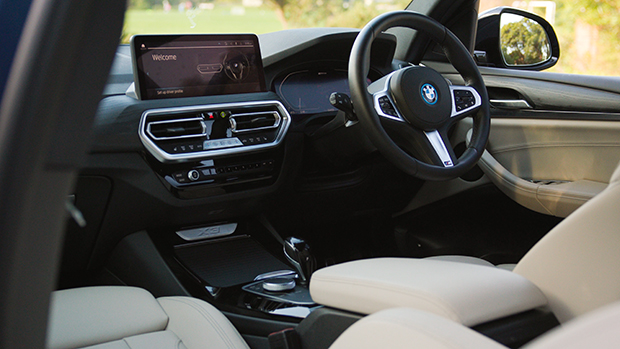
Most people will be able to find a very comfortable driving position too owing to the 14-way electrically adjustable pews with lumbar, tilt, sliding under-thigh adjust and two-position memory – though the passenger seat misses memory and lumbar. Seat heating is standard in the 30e specification though ventilation is a $1000 option.
The X3’s 12.3-inch central touchscreen may not be as generous as the iX electric SUV’s floating 14.9-inch unit, but it displays all the usability of BMW infotainment systems gone before – it just works. After setting up wireless Apple CarPlay or Android Auto it’s also so simple just to jump in with your device in a pocket and head off.
This theme of being simple to interact with continues down to the control centre where BMW gathers all the relevant switchgear including start-stop button, gear stick, parking sensors and drive modes into one, easy-to-reach location with no scattered switchgear. The HVAC controls also remain physical – not minimal, but very functional.
Only that low contrast 12.3-inch digital driver’s display with its dark maps remains frustrating, but when it was added in the X3’s 2021 facelift BMW added the ability to view the cover of the album you’re listening to which, when it’s a good design, adds a visual lift to the cockpit.
Practicality-wise the American-influenced X3 is one of the best BMWs available with very generous door bins, ample storage under the soft central armrest and a useful cubby with two cup holders ahead of the shifter.
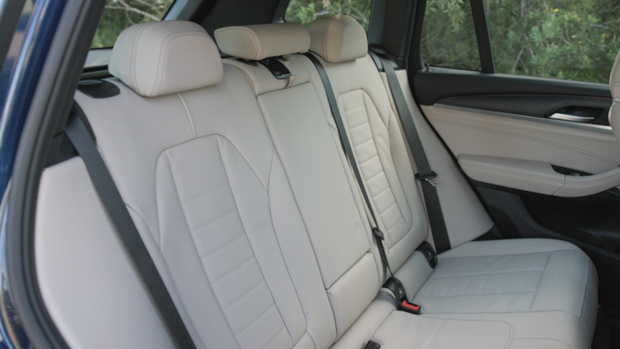
In the back the X3 continues to cater for tall humans with headroom for someone over 188cm tall, as well as ample knee and toe room. The bench is very comfortable and supportive, with only the sizable transmission tunnel potentially hampering the ability to fit three across.
There is a separate climate zone for rear passengers, two USB-C fast-charge points and heating for the outboard spots on the bench making the X3’s rear quarters feel fully featured.
What’s less impressive is the 100 litre drop in cargo space compared to a petro example. At 450 litres, the 30e isn’t as spacious as many of its rivals and the raised boot floor makes it difficult to load bulky items. There is also no spare wheel under the floor, though run-flat tyres and a puncture repair kit are there to help you out of strife.
The $15,000 premium over an X3 30i should equate to much improved running costs for this plug-in hybrid, but as with all PHEVs this is heavily influenced by the owner’s charging diligence.
If left with no charge in its battery and relying on regen braking for short top ups, we returned an unimpressive 8.2L/1009km figure in town. The urban ADR figure for a 30i petrol is 9L/100km, so the hybrid still provides better economy but not by a huge margin.
With the 10.8kWh battery charged up overnight using a standard three-pin socket – that takes around 5.5 hours – we were able to hit 1.6L/100km over the same distance and urban conditions, beating the ADR combined figure of 3.2L/100km.
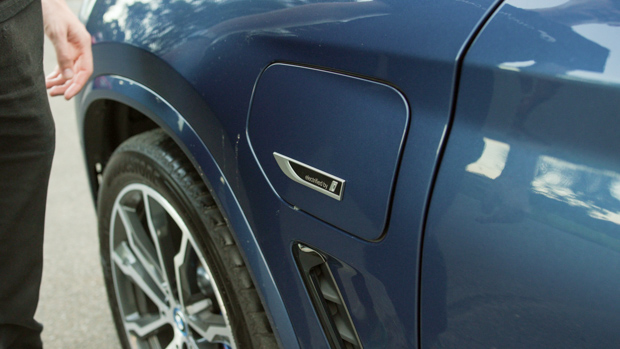
Additionally, the electric-only range of the X3 30e is decent – if short of the 51km WLTP claim – averaging 24.6kWh/100km in our testing, the PHEV should be capable of about 45km urban driving, and is able to reach a top speed in EV mode of 135km/h according to BMW. The X3 30e requires 95 Ron premium unleaded.
Charging the X3 30e is best done at home overnight or during work hours as its maximum 3.7kW replenishing rate doesn’t allow an owner to take advantage of public fast-charging. Compared to a three-pin socket, a 3.7kW wallbox will take 3.5 hours to take the X3’s battery from 0-100 percent.
Servicing is required on a conditions-based model with BMW offering a five year/80,000km service package for the X3 for $1650, and a more involved Plus package that covers brake pads, rotors and wiper blades for $5340 over the same period.
Compared to its rivals, the X3 is affordable to service with a Lexus NX 450h+ costing $1485 for only three years/45,000km, a Volvo XC60 $3000 for five years/75,000km and a Mercedes-Benz GLC 300e $5800 over a longer five year/125,000km period.

BMW once again falls short of its rivals by only offering a three year/unlimited kilometre warranty and doesn’t offer the ability to extend the guarantee either – Porsche does with its Macan and an extra two years of warranty costs $2790.
Those who have a return commute shorter than 40km, the ability to charge safely at home out of the rain and need to occasionally go for longer runs across the Australian countryside will very much appreciate a PHEV’s unique blend of attributes.
And the X3 is a pretty good plug-in as these things go, being able to disguise its weight well while boasting a good turn of speed, plenty of cabin space and BMW’s trademark handling characteristics.
The hassle of both having to charge and refuel your car may be too much for many, but that’s why BMW offers such a broad array of powertrain choices for the X3 in Australia – if you don’t like charging then there are five other variants, and if you hate petrol stations there’s the iX3.
There is no clear, single answer on value for money when it comes to a plug-in hybrid. If you can charge the vehicle overnight or during the day when you’re at work, this vehicle would be very cheap to run – and rewarding at full throttle too. But if you roll around with a dead battery it’s going to end up more expensive over its lifetime than a simple petrol or diesel X3.
For urbanites who want to cut down on their local CO2 emissions without losing the ability to head bush at the drop of a hat, this X3 xDrive 30e may just be perfect.
Key specs (as tested)
About Chasing cars
Chasing Cars reviews are 100% independent.
Because we are powered by Budget Direct Insurance, we don’t receive advertising or sales revenue from car manufacturers.
We’re truly independent – giving you Australia’s best car reviews.
The estimate provided does not take into account your personal circumstances but is intended to give a general indication of the cost of insurance, in order to obtain a complete quote, please visit www.budgetdirect.com.au. Estimate includes 15%^ online discount.
^Conditions Apply
Budget Direct Insurance arranged by Auto & General Services Pty Ltd ACN 003 617 909(AGS) AFSL 241 411, for and on behalf of the insurer, Auto & General Insurance Company Limited(ABN 42 111 586 353, AFSL 285 571).Because we don’t know your financial needs, we can’t advise you if this insurance will suit you. You should consider your needs and the Product Disclosure Statement before making a decision to buy insurance. Terms and conditions apply.
Indicative quote based on assumptions including postcode , 40 year old male with no offences, licence suspensions or claims in the last 5 years, a NCD Rating 1 and no younger drivers listed. White car, driven up to 10,000kms a year, unfinanced, with no modifications, factory options and/or non-standard accessories, private use only and garaged at night.
^Online Discounts Terms & Conditions
1. Discounts apply to the premium paid for a new Budget Direct Gold Comprehensive Car Insurance, Third Party Property Only or Third Party Property, Fire & Theft Insurance policy initiated online on or after 29 March 2017. Discounts do not apply to optional Roadside Assistance.
2. Discounts do not apply to any renewal offer of insurance.
3. Discounts only apply to the insurance portion of the premium. Discounts are applied before government charges, taxes, levies and fees, including instalment processing fees (as applicable). The full extent of discounts may therefore be impacted.
4. We reserve the right to change the offer without notice.